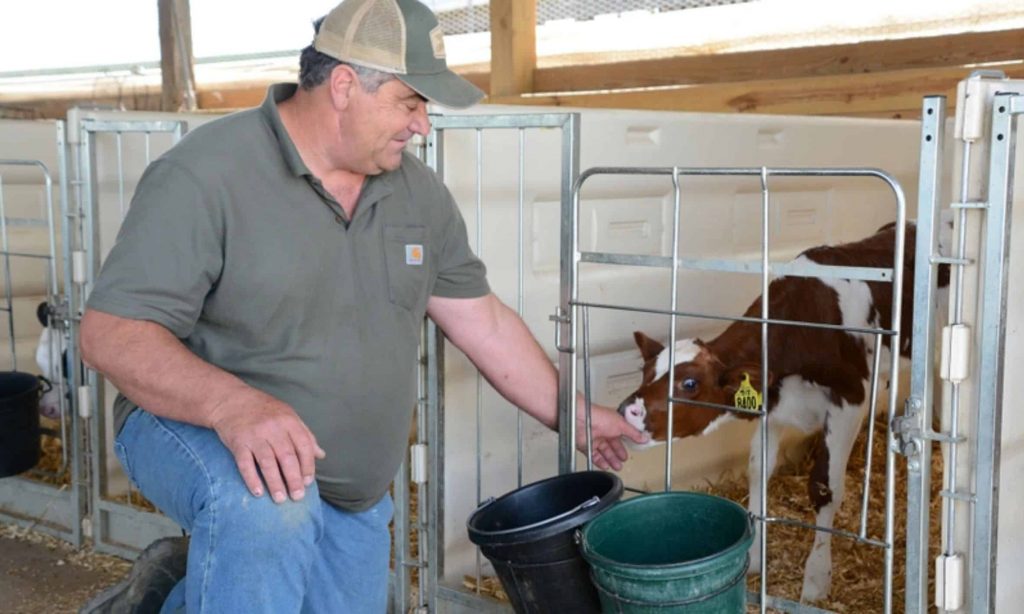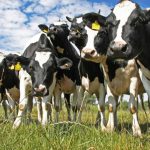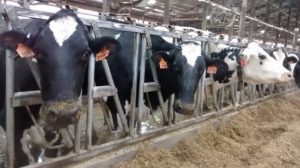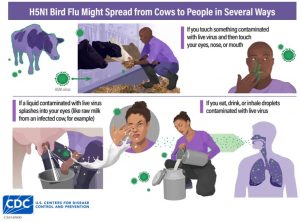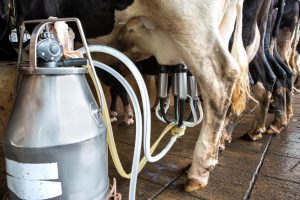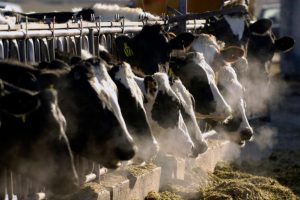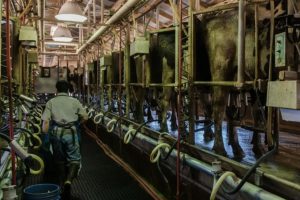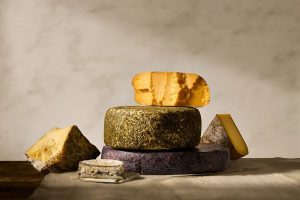
Rick Adams is a low-key, matter-of-fact kind of guy. He doesn’t get excited about a lot of things, until you start talking about cows — specifically, his cows.
The dairyman lights up when you tour his barns at Sugar Creek Dairy outside Elkhorn, Wis.
“Look at her. Isn’t she a beautiful animal?” he says admiringly, gazing toward one of 600 prized registered Holstein milkers.
The joyful vibe continues through the calf barn as he patiently explains the genetics and management skills that go into making a high-level registered herd. The cows get the royal treatment here, with back scratchers, breezy fans, sprinklers to ward off heat stress and enough sand to make a beachcomber jealous.
It becomes clear that Adams is in love. With his wife and farm partner, Marleen, of course. She’s been by his side throughout the farm’s journey. But also, these cows. You can see it in his face.
And after decades of building this top-level herd, he seems in no hurry to do anything other than keep managing the cows and the farm that surrounds them, despite his 63 years and a debilitating back surgery some years ago.
Starting from scratch
Maybe the satisfaction comes from how it all started. Adams and his wife both grew up on farms. His family’s farm in Lake Geneva, Wis., wanted to focus on beef and hogs, and not the few dairy cows Adams had been nurturing and studying as a child and then as a young farmer.
So 26 years ago, Adams and his wife partnered with another dairyman to start a herd on 185 bare acres near Elkhorn.
“I had pushed to build a milking parlor, but the land was costly in Lake Geneva,” he recalls. “I was getting frustrated, so I found another site here where we live with a partner who had also split off from his brother. I sold my portion of animals in Lake Geneva and brought 50 cows up here.”
The two dairymen started out with 450 cows to milk, so it was sink or swim for Adams.
“To go from 50 to 450 at the time was a huge step,” he says. “I knew when I left the home farm that I had to be self-reliant; I knew I couldn’t go back. We had to stand on our own two feet.”
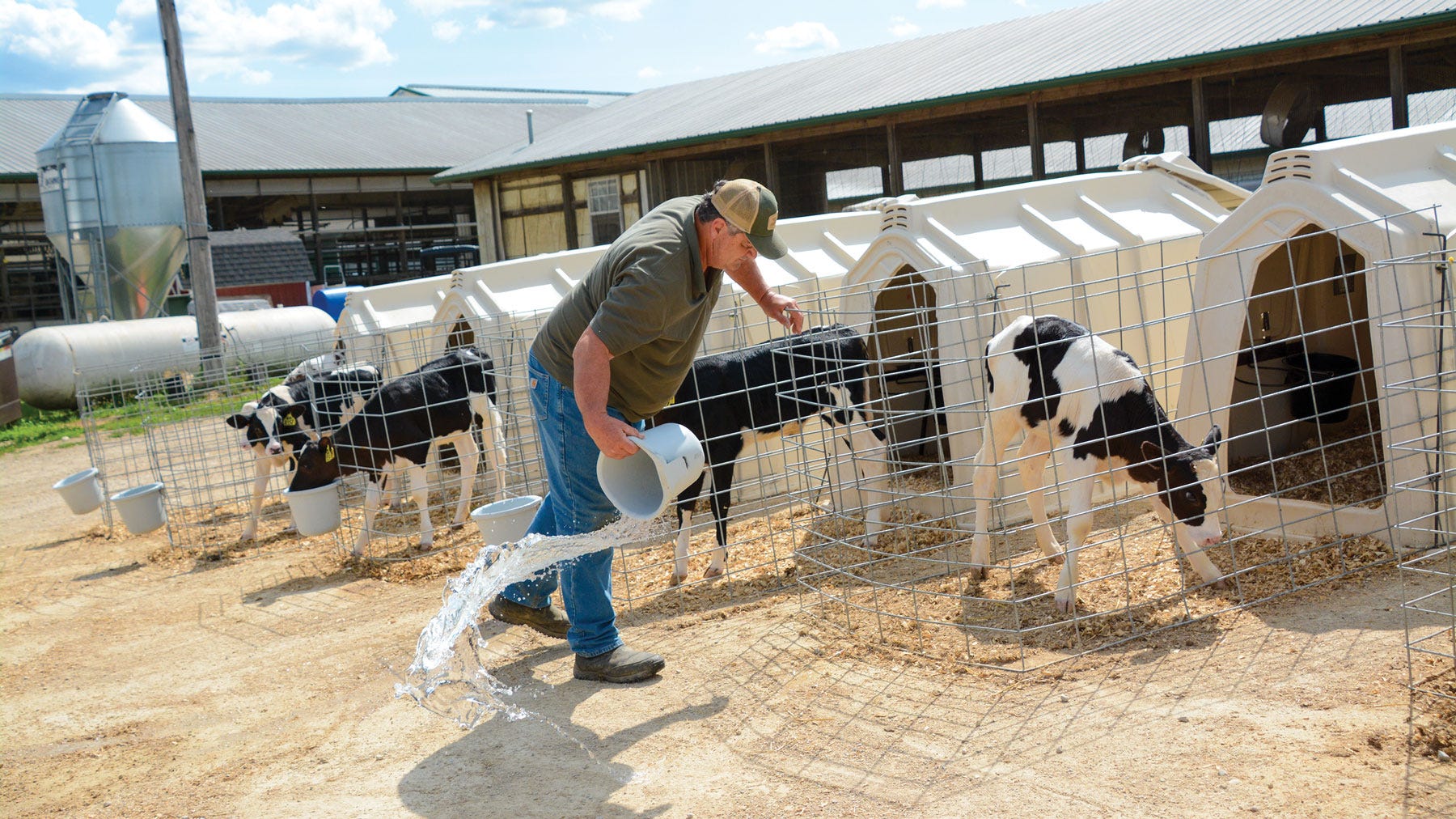
’80s hangover
What were those early days like? Adams came into the partnership with what can only be described as an ’80s hangover. Years ago, his family had gone through a financial crisis, and the lessons lingered.
“My dad was a forward-thinker, but in ’85, the farm crisis hit everybody and our bank started calling in notes,” he recalls. “My brother and I were strong enough to hold on financially, and we ended up transferring some land ownership to us. We found a mediator to help us get through that, and in ’89, we had a great year and turned it around.
“The debts were all paid off, but you don’t want to live through that again,” he says ruefully.
That experience is why the partners both brought in bankers to help set up their partnership. What followed was an explosion of farm growth.
Even as both partners continued work at their family operations, a new dairy farm was rising up on the Wisconsin prairie. Cement trucks got busy with commodity sheds, a new herringbone parlor, bunker silos and a manure storage facility, all springing up in less than a year.
Meanwhile, Adams became the designated herd buyer. He bought a 100-cow herd from a place he trusted farther north and another herd from a southern Illinois farm.
“My partner knew cows, but he trusted me to make those decisions,” he says.
‘We were shocked’
The new dairy ran smoothly for 10 years until 2007 when another upheaval forced Adams to re-imagine his family’s future.
“My partner came in and said, ‘I’m getting a divorce. I want to buy you out, or you buy me out,’ ” Adams recalls.
“We were shocked,” he adds. “We had to each hire our own attorneys. In the end, he named his price and didn’t want to negotiate, so we paid it and moved on. It was not a happy ending.”
The Adamses turned the farm into a limited liability company. It was also a chance to reevaluate the farm’s infrastructure. Facilities were 10 years old and needed updates. Barns were remodeled. At this point, heifers had been “farmed out” to other farms, but Adams wasn’t happy with how they were coming back, so he built a heifer barn for 350 head.
“That allowed me to grow the heifers correctly, and we had less attrition,” he says. “For the animals that needed to be bred the first time, we could take our best cows and put embryos in them, and so we improved genetics more rapidly. I had the pedigrees, the production — we just had to make more cows. We’ll put in 150 embryos this year, the largest number ever.”
New facilities helped springboard production, yielding enviable milk-per-cow numbers. Their rolling herd average is 32,348 pounds of milk.
Risk strategy pays off
Having top-producing cows is a big reason for the farm’s success. The other factor may be Adams’ approach to risk management. It paid off big when milk prices went tumbling in 2009.
“Risk management is important because no one else is looking out for your business,” he says. “We’ll buy puts and calls, and contract milk to put a floor under prices. We were the first to do that as we got larger.”
Fearing economic upheaval when Barack Obama was elected president in 2008, Adams took action in case any troubles hit the dairy industry. “We had $20-per-cwt milk at the time, but I said to a broker, ‘I want to get some puts for the fall’ — and he laughed at me,” Adams recalls.
Undeterred, he put in orders in three-month increments through May of the following year, creating a floor under milk prices. He got the puts cheap because milk prices were high and no one expected them to drop. But by Thanksgiving, milk had dropped to $13. By Christmas, it had fallen to $11.75, dropping 75 cents, the limit, on the last day of the year.
“We were profitable by $6 per cwt,” he says. “For everyone else, it was a disaster. We made $350,000 on those puts that year. We actually made some capital improvements because we made so much money during that six-month period.”
The puts and calls are a routine part of his risk management today. Now, two government programs — Dairy Margin Coverage and Dairy Revenue Protection — help subsidize the cost of puts and calls, leading to wider adoption among dairies.
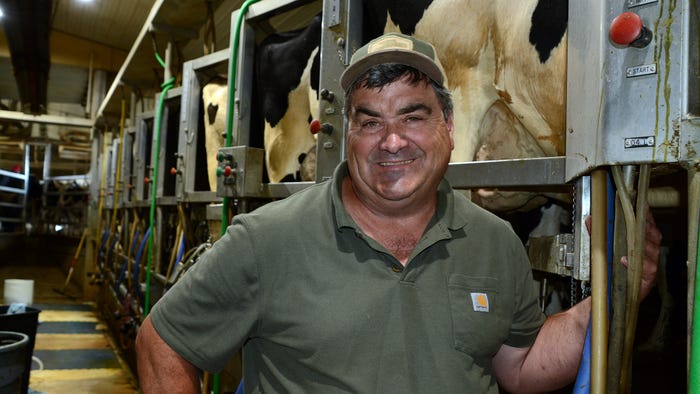
Self-taught dairyman
Despite business upheavals, Adams has worked tirelessly on his quest to master the purebred Holstein business. In early days, he took a few short courses and became a voracious reader.
“Having access to university professors really opened my eyes on things like ration balancing, milking procedures and genetics,” he says.
But his skills grew mainly from talking with and listening to other dairy producers.
“Growing up, my neighbor had a small herd of registered cows and would come over,” Adams says. “That got me interested in purebreds. He took the time to teach me what a top cow looked like.”
Before leaving his home farm, Adams bought his first registered cow and began to study pedigrees, even writing out notes each night. “Once you do that and meet other breeders, you can watch and learn,” says the Holstein enthusiast.
When the business broke up in 2007, Adams purchased expensive heifers from highly sought-after Apple and Faith genetic lines. It was a pivotal point in his career. “It’s probably the most I’ve ever spent on heifers, but it paid off,” he says.
Data is a privacy worry for a lot of farmers, but not registered Holstein owners. For them, data is the road map to improvement. Adams is proud to say his herd ranks in the top 300 of 1,300 herds nationwide.
“If you don’t document what you did, how are you going to improve the cow?” he says.
The latest trend for breeders is DNA testing to determine what kind of butterfat and protein a calf may eventually give when it begins to produce milk.
In a herd of their own
In 2017, Sugar Creek received the Herd of Excellence designation from Holstein Association USA, a national group of registered breeders. The Adamses sell 15% of their cows to other dairy farmers, a further revenue source. When their cattle hit show rings, buyers pay attention.
“We’ve sold animals all over the country,” Adams says. “When you make a really good cow, people want to buy them.”
Adams’ passion for his cows fits his business and his personality to a T. He likes to compete in the registered purebred world, “because it’s a level playing field,” he concludes.
Tricks to high retention
Rick and Marleen Adams, who took accounting courses at Madison Area Technical College, employ 14 people, mainly of Hispanic descent, at Sugar Creek Dairy. While Rick focuses on cows, Marleen focuses on finance, setting schedules and handling payroll.
“She’s the detail person, and I’m the people person. She does most everything,” Rick Adams jokes.
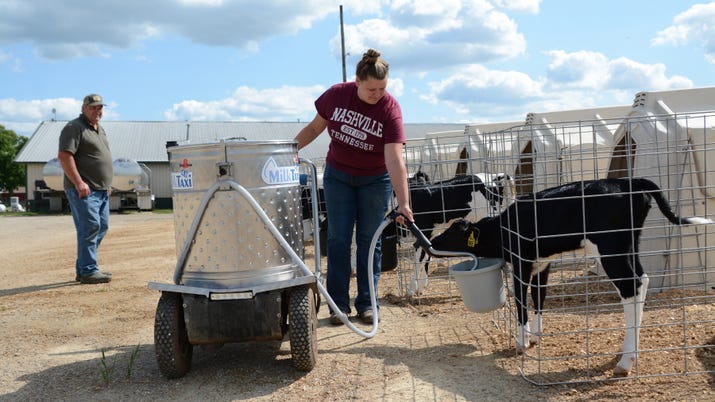
The Adamses try to make Sugar Creek a place where people want to work. Out of the 14 on payroll, only two have been there less than seven years.
“During COVID, it was hard, but otherwise, we’ve had great retention,” Adams says. “We pay them well and give people flexibility. The Hispanic culture is a good fit for dairies. Cows give more milk when they are calm, and the Hispanic families are perfect for that.”
Another secret is to give employees opportunities for upward mobility. “The guy who used to be a part-time assistant milker is now the herdsman, a big responsibility for 600 cows,” Adams says. “He wanted to do more, so we just kept giving him more responsibility. He would watch closely and learn.”
Respect is another piece of the puzzle. “We treat people like they are related,” Adams says. “When someone’s not happy they can come talk to us.”
